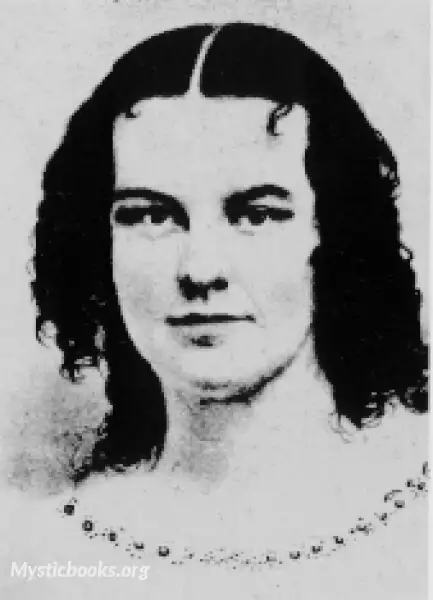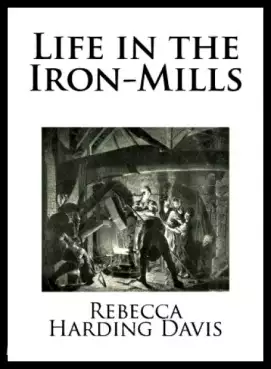
Timeline
Title
Country/Nationality
Rebecca Harding Davis
Rebecca Blaine Harding Davis was an American author and journalist. She was a pioneer of literary realism in American literature. She graduated valedictorian from Washington Female Seminary in Pennsylvania. Her most important literary work is the short story "Life in the Iron-Mills," published in the April 1861 edition of The Atlantic Monthly which quickly made her an established female writer. Throughout her lifetime, Davis sought to effect social change for African Americans, women, Native Americans, immigrants, and the working class, by intentionally writing about the plight of these marginalized groups in the 19th century.
Rebecca Blaine Harding was born at the David Bradford House in Washington, Pennsylvania, on June 24, 1831, to Richard and Rachel Leet Wilson Harding. Rebecca was the eldest of five children. After an unsuccessful entrepreneurial spell in Big Spring, Alabama, the family finally settled in Wheeling, West Virginia, in 1836. At the time, Wheeling was developing into a productive factory town, the concentration of which was iron and steel mills. The environment of Rebecca's home town would later affect the themes and vision of her fiction, like "Life in the Iron-Mills." Despite Wheeling's productivity and its accessible location along the Ohio River, Davis described her childhood as having belonged to a slower, simpler time, writing in her 1904 autobiography Bits of Gossip that, "there were no railways in it, no automobiles or trolleys, no telegraphs, no sky-scraping houses. Not a single man in the country was the possessor of huge accumulations of money".
During the earlier part of Davis's childhood, public schools in her hometown were not yet available. Her education was mainly undertaken by her mother, with occasional instruction from tutors. While being home-schooled, Rebecca read such authors as Harriet Beecher Stowe, sisters Anna and Susan Warner, and Maria Cummins, which initiated her interest in literature. When Davis was fourteen, she was sent to Washington, Pennsylvania to live with her mother's sister, and attend the Washington Female Seminary. She graduated as class valedictorian in 1848, at the age of seventeen. Rebecca described the school as "enough math to do accounts, enough astronomy to point out constellations, a little music and drawing, and French, history, literature at discretion". After returning to Wheeling, she joined the staff of the local newspaper, the Intelligencer, submitting reviews, stories, poems, and editorials, and also serving briefly as an editor in 1859.
Upon returning to her industrial hometown, Wheeling, Rebecca Harding Davis socialized very little, staying largely within her own family circle. She continued this isolated way of life for thirteen years until the publication of Life in the Iron Mills in 1861.
Life in the Iron Mills, published in The Atlantic Monthly in April 1861, is regarded by many critics as a pioneering document marking the beginning of realism in American literature. The successful publication of the short story also won her acclaim in the literary circles of her time. At the time it was published, Harding was acknowledged as a "brave new voice" by Louisa May Alcott and Ralph Waldo Emerson. They were impressed with the author's goal, which was "to dig into the commonplace, this vulgar American life, and see what is in it". She later met and became acquainted with Emerson whilst staying with Nathaniel Hawthorne during a trip she had long delayed to meet her publisher James T. Fields. She greatly admired both of these American writers. During this trip around the North, which originated with her publisher's desire to meet her personally, Davis also became close friends with her publisher's wife, Annie Adams Fields.
On her journey back from a meeting with her publisher, Rebecca met L. Clarke Davis in Philadelphia, Pennsylvania, whom she had been corresponding with since he had contacted her as an admirer of her work after the publication of "Life in the Iron-Mills." They became engaged one week after meeting and were married on March 5, 1863. Clarke was four years younger than Davis and not yet financially or professionally established in the world. The following year she gave birth to their first son, Richard Harding Davis, who was to become a writer and journalist himself. Their second son, Charles Belmont Davis was born in 1866 and also became a writer; their daughter, Nora, in 1872.
At the start of their marriage, Rebecca was the primary income provider for the family, as Clarke worked to establish himself in his law career. She accomplished this through her writing and as an editor for the New York Tribune. However, ten years after their marriage Davis had faded substantially from the literary world. Clarke gave up law and became an editor for The Philadelphia Inquirer as well. In 1892, Davis received a small critical and popular success with Silhouettes of American Life, but it was her last. She died at age 79, on September 29, 1910.
Books by Rebecca Harding Davis

Life in the Iron Mills
This 1861 novella was the first published work by Rebecca Harding Davis: writer, social reformer, and pioneer of literary realism. It tells the story of Hugh Wolfe, a Welsh laborer in an iron mill who is also a talented sculptor, and of Deborah, the...